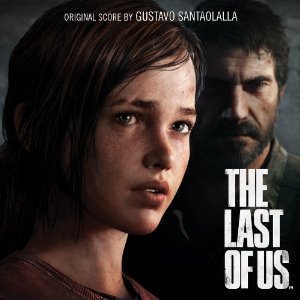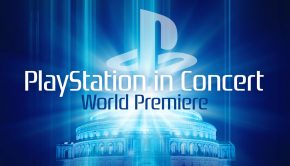The Last of Us Original Score
 |
Album Title: The Last of Us Original Score |
| Record Label: Masterworks (Physical Edition); Sony Computer Entertainment (Digital Edition) |
|
| Catalog No.: 88765 49315 2; N/A |
|
| Release Date: March 5, 2013; June 14, 2013 |
|
| Purchase: Buy at Amazon |
Overview
The Last of Us, developed by Naughty Dog and produced by Sony Computer Entertainment, made a significant impact when it was finally released for the PlayStation 3 and 4 last year. After teasers for the game since 2008, the game exceeded already-high expectations and received perfect ratings from numerous major media outlets. It’s rare that games make such a positive impact on such a wide range of players; but by combining an apocalyptic premise with a poignant relationship between the two protagonists, the game ended up striking a chord with almost all of its players.
The composer Gustavo Santaolalla was an interesting choice for the soundtrack. Though this was his first game score, he is well-known for his Oscar-winning soundtracks to films Brokeback Mountain and Babel. I was not crazy about either of these scores when they were released; to me, they were a little too devoid of substance. Santaolalla is a minimalist in every sense of the word; the instrumentation in his scores is diminished, often to a single melodic instrument with percussive backing, and sometimes without the melodic instrument at all. Musically, his music is vaguely reminiscent of other minimalist composers in his generation, sticking with one or two melodies throughout the entire work that are repeated in several different scenes throughout the game or movie. Despite receiving tremendous acclaim, Santaolalla’s methods didn’t work for me in Babel and Brokeback Mountain. I needed a little more than bare guitars, soft drums, and the occasional pipe. In The Last of Us, Santaolalla’s method was exactly what the game needed.
Body
In The Last of Us, the two protagonists journey across post-apocalyptic North America after a plague has wiped out most of the population and mutated many of the survivors. But while the game may ostensibly be a horror game, based on the premise (and at points it gets seriously creepy), the music is about the emotion and relationships in the game. The titular main theme is the premier example. There is nothing horrific about the track, at least on the forefront; instead, it is melodic, soulful, bluesy, and, well, pretty. The warm, longing leads from the ronroco, a guitar-like instrument performed by Santaolalla himself, capture the characters’ intimate bond. In combination with the slightly cold, barren harmonisation, these solos also embody Joel and Ellie’s desperate struggle for survival in the post-apocalyptic world. It’s a refreshing change to typical game scoring and somehow isn’t at all jarring; instead, it just seems to fit and really captures the atmosphere of the game.
Santaolalla approached the main theme and the score in general much like a western: twangy guitars and lutes, earthy percussion instruments, howling woodwinds, and minor arpeggios are all over the place. In places, he takes the minimalistic approach he is known for to the extreme and focuses on just one of these components: “Forgotten Memories” is a monophonic track made up of the wails of a bowed vibraphone; “I Know What You Are” is an 80-second crescendoing drum roll; and “Breathless” is little more than deep ambient drones. These tracks will divide listeners on a stand-alone basis, but they are still highly effective in the game. For example, the unique timbres created by the prepared instrument in “Forgotten Memories” results in a simultaneously personal yet haunting sound, while the tribal drum work of “Hunters” embodies the hostile, primitive elements of humanity. Just don’t go into The Last of Us expecting some overblown Hollywood action score, otherwise you’ll be disappointed.
The feature that gives The Last of Us its mainstream pull is its thematic consistency. For example, Santaolalla reprises the game’s main theme in several emotional keypoints during the storyline, ranging from a haunting string sketch on “Never Again” or a comforting lute duet on “You and Me”. Meanwhile, the gentle, bittersweet “Vanishing Grace” captures the evolution of Ellie and her relationship with Joel during the game; present in three variations during the album release, the theme develops from its detuned piano exposition on track 6 into a full string recapitulation on track 21. On the other hand, “All Gone” is a theme of tragedy and all its variations of the score are tear jerking; this is thanks to both the beautiful structure of the melody and its interpretation by various performers, especially Nashville’s string players. Collectively, these themes ensure the soundtrack tells an emotional story both within the game and on a stand-alone basis.
The soundtrack blends together almost seamlessly and it’s sometimes hard to tell where one track ends and the next begins; I don’t mean that as a negative. The score does vary, and it has several striking moments, where something new stands out amidst the rest of the score. Regardless of whether I’m listening to the soundtrack or playing the game, I will think I have fallen into a pattern every so often where I’ve been experiencing the same thing for almost too long, and then something will happen: whether the rapid solo percussion in “The Hunters,” the sprawling, unapologetic twangs in “Smugglers,” and the heartfelt strings in “All Gone (No Escape).” And, of course, “The Path (A New Beginning)” serves as an excellent pay-off at the end of the game; while the track adopts a similar structure to the main theme, complete with a ronroco focus, it is much more assuring overall. But just like the rest of the score, it never leans towards melodrama in favour of something more subtle and personal.
Summary
Santaolla knows how to engage the player with his music. While I was bored by his cinematic scores, his style fit perfectly in The Last of Us: subtle enough to keep from being a distraction, riveting enough to encourage the player during the most frustrating challenges, and thoughtful enough to evoke emotion when listened to separate from the game. This soundtrack is very different from most other games in its bare instrumentation and minimalist melodies, but one of the most effective soundtracks I’ve heard for drawing the audience all the way into a top-notch game. A physical release of the soundtrack is available at Amazon now. For extra-keen listeners, a digital-only second volume was also recently released.
Do you agree with the review and score? Let us know in the comments below!
4.5
Posted on June 5, 2014 by Emily McMillan. Last modified on June 5, 2014.















Pingback: Game Soundtrack Review References | Create